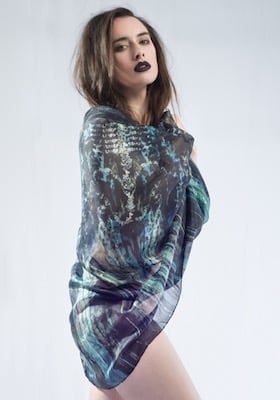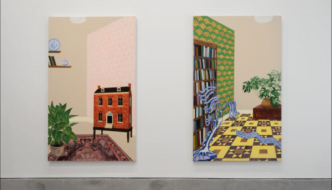The V&A’s Balenciaga retrospective shows his radical and enduring legacy

Dovima with Sacha, cloche and suit by Balenciaga (Paris, 1955). Image: Richard Avedon via V&A Press Office
In the era of Christian Dior’s ‘New Look’, ruled by full skirts and nipped in waists, Balenciaga subverted trends to create some of the most innovative designs of 20th century fashion. Balenciaga: Shaping Fashion at the V&A showcases the unusual, eye-catching and elaborate work of the pioneering Spanish designer. It charts his rise from his first boutique in San Sebastián, to becoming one of the world’s most influential and revered couturiers. The retrospective presents an opportunity to experience the diverse and creative nature of his work and see how he shook up the world of fashion.
The ground floor of the exhibition explores his designs, inspirations and intricate craft, while the upper floor celebrates his ongoing influence on contemporary fashion. It is a rare chance to see his most innovative designs, such as the minimalist one-seam coat, the multi-purpose skirt/cape, the sack dress and his semi-fit garments.

Model wears Balenciaga orange coat (Paris, 1954). Image: Mark Shaw via V&A Press Office
A unique aspect of the V&A’s retrospective is their knowledge of garment making; the exhibition uncovers how Balenciaga created some of his most ingenious designs. You can work out the design behind the one-seam coat for yourself, by folding and cutting a mini paper pattern, to make your own tiny paper model. X-ray imaging reveals the complex and technical pattern making behind his 1954 balloon hem evening dress, showing how he manipulated layers and layers of fabric to create the signature shape. Another evening gown is displayed inside out, showing the painstaking attention to detail with which it was constructed. These insights show the precision and complexity of his design and production.
His unique design method, which allowed him to create the most eye-catching designs, is perfectly explained in this retrospective. Always using the fabric as his starting point, he began his designs by draping rather than sketching, creating three-dimensional, architectural shapes and volumes that were drastically different to the fashionable silhouettes. His androgynous sack dress, which was initially met with distain by critics, was predecessor to the 60’s mini shift dress. His refusal to follow fashions or be restricted to replicating and accentuating the female form meant that he was always ahead of the curve.
The V&A also makes great use of supporting multimedia and interactive elements. Archive sketches, patterns, photographs, fabric samples and catwalk footage recreate Balenciaga’s fashion world. You can even try on a replica of his convertible balloon skirt/cape, seeing how it can be worn as both ways. The use of different supports and media creates a three-dimensional and immersive experience, mirroring Balenciaga’s approach to fashion.

Oscar de la Renta, Spring/Summer 2015. Image via V&A Press Office
The upper floor demonstrates how Balenciaga’s style has shaped contemporary fashion. Garments from a huge range of designers, from the 1960s up to the present day, reveal the wide reach of his influence. Yuki picks up his minimalism in their own version of the one-seam coat, Delpozo takes inspiration from his innovative use of shape and Oscar de la Renta is inspired by his painstaking attention to detail and exquisite embroidery. In a video produced for the exhibition, Molly Goddard, Gareth Pugh and Josep Font (Creative Director for Delpozo) discuss the importance of Balenciaga in forming their own design voices. By displaying modern Balenciaga pieces alongside pieces by designers that Balenciaga inspired, the exhibition shows how his radically different vision of fashion has endured. The fact that so many contemporary designers can trace their inspirations back to Balenciaga underlines just how influential this new approach to fashion was.
Balenciaga: Shaping Fashion collects his most innovative creations, deconstructs the process behind the design and highlights the avant-garde nature of his work. The exhibition perfectly captures his artistic spirit; a fashion revolutionary, he always leading rather than following the trends, and ultimately changed fashion forever.
Filed under: Fashion
Tagged with: Balenciaga, contemporary fashion, design, designer, exhibition, fashion, fashion history, Richard Avedon, The V&A, V&A



Comments